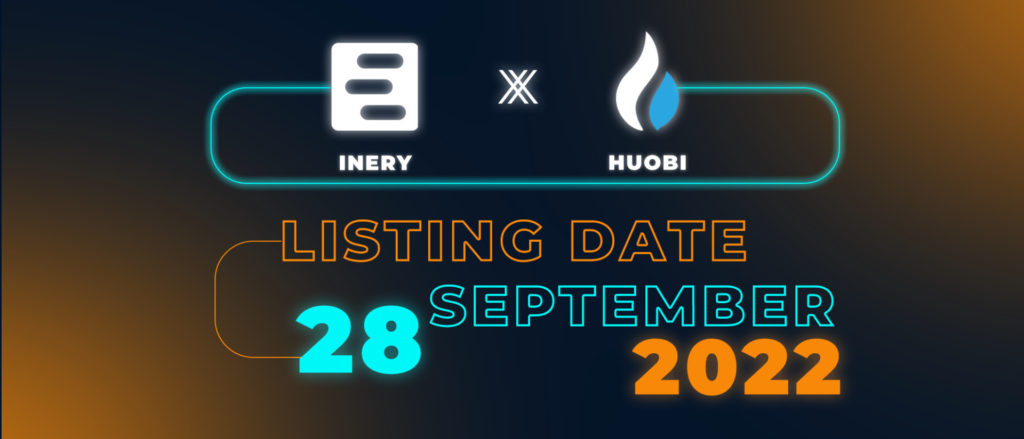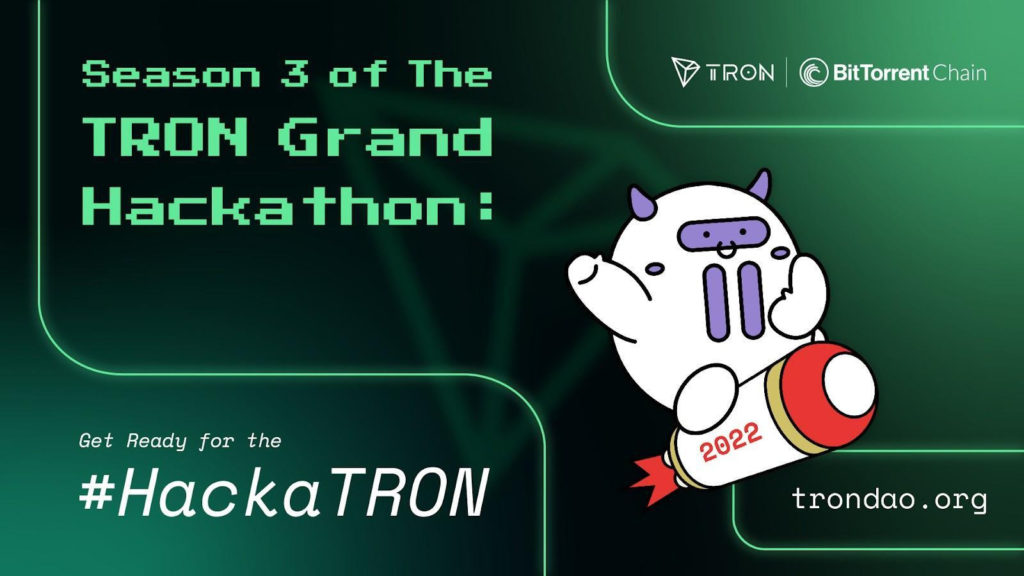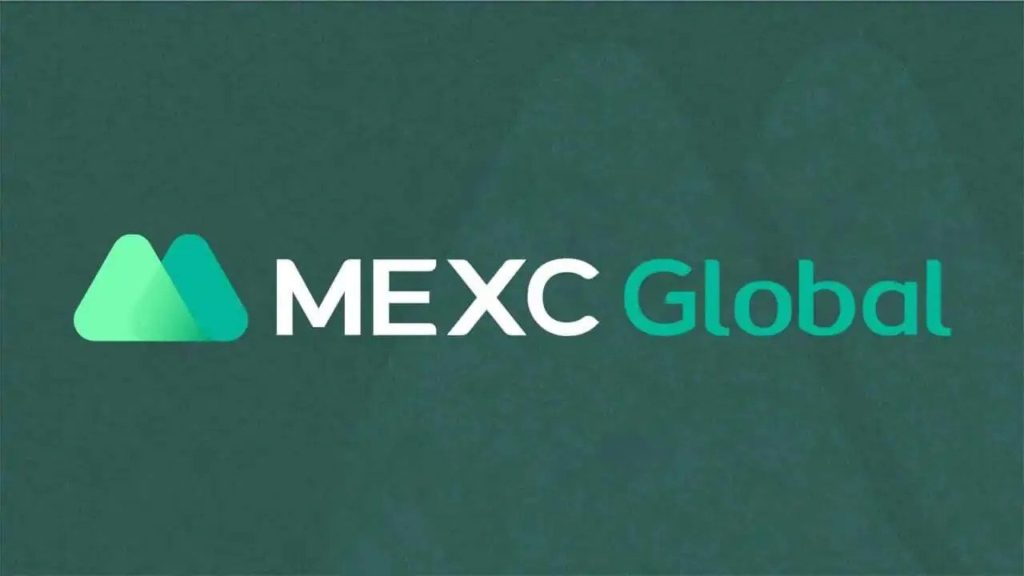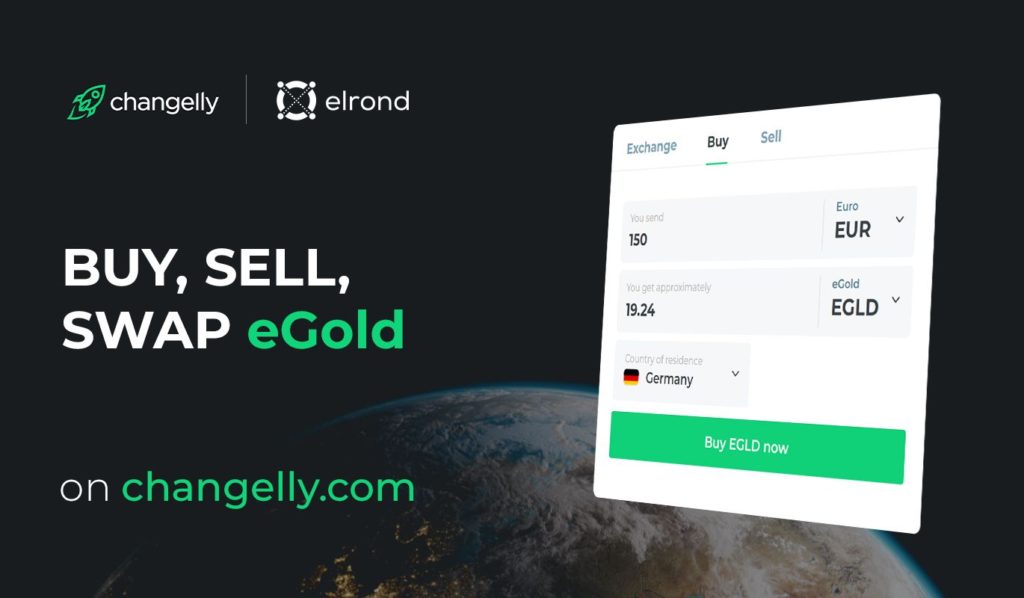Seattle, Washington, United States, 20th September, 2022, Chainwire
Peer Inc., a metaverse technology company, has entered a new partnership with Seattle-based innovation agency Fresh Consulting. Peer will be working with Fresh to deliver on its vision of a gamified digital layer on top of the world, and support its mission to bring people and content into the metaverse. Fresh will provide an elite team of engineers, developers, designers, and strategists who build innovative end-to-end solutions for some of the world’s largest tech companies.
“AR is eating the metaverse,” said Tony Tran, CEO & CTO, Peer Inc. “We were searching for a crack-shot execution team to deliver on our massive AR vision to leapfrog ahead of the competition. We found it at Fresh. Their impressive portfolio and extensive service offerings position us to advance our mission in short order.”

Peer will work with Fresh to develop hardware and software experiences over Peer’s decentralized blockchain to drive mass adoption, give users ownership of their data and help them monetize what they create online.
“The metaverse is inevitable,” said Tran. “We see a clear path to a magical AR experience in a coherent product that people will want to use every day. Blockchain will give peers what they need to go from digital experience to digital reality. We’re so excited about what’s coming we can hardly sit still.”
In a recent podcast with Fresh Consulting on the metaverse, Tran elaborated on its immense potential. “In the simplest embodiment, the metaverse will exist as a three-dimensional expansion of the web that we know and love today. Metaverse content will exist everywhere and connect everything. It’s really like a merging of the present web that we know, all of the data that’s on the web, plus all of the connected devices, and then mapping that against the physical world.”
Fresh is a fifteen-year-old company with over 380 employees, headquartered in Bellevue, Washington, with offices in Portland, Bangkok, Austin, Dallas, and Houston. Fresh has delivered award-winning work while serving over 400 clients, from startups to Fortune 100 companies. They provide holistic, end-to-end solutions across strategy, design, software, and hardware.
“We’re really excited to be working with Peer given where the future is going,” said Fresh Consulting CEO Jeff Dance. “Today, there are already a billion devices with augmented reality, and in the future, the Holy Grail is where technology disappears. How we make AR a natural human experience is the promise of the metaverse.”
For more insight on the future of AR and the metaverse, please watch this interview with Jeff Dance, Tony Tran, and Peer COO Heath Abbate.
About Peer Inc.
Peer is a metaverse technology company building a gamified digital layer on top of the world. Peer is headquartered in Seattle, Washington. To learn more, please visit peer.inc and follow Peer on Twitter @peerpmc.
Contacts
- Jonathan Ghent
- jon@peer.inc
Singapore, Singapore, 19th September, 2022, Chainwire
Inery, a decentralized data system, announces the official listing of its token on Huobi Exchange is set to go live on September 28, 2022. Huobi Exchange is one of the world’s leading crypto exchanges, supporting over 1000 trading pairs and more than 600 cryptocurrencies.
Inery takes a different approach to decentralizing data and data management for both Web2 and Web3 companies while streamlining the shift to the decentralized web.
Inery ecosystem is curated to enable decentralized data management by integrating blockchain functionalities like immutability, security, and owner-controlled data assets with the distributed database properties to enable high performance, low network latency, and complex query functions. The ecosystem is secured and powered using the network’s native token, $INR.
“We are pleased to have Huobi Exchange on board with us. Listing Inery token plays an integral role in our roadmap; and with Huobi’s support, we can bring Inery’s vision to the markets and onboard more people in our mission to reshape the world through the paradigm shift in data management,” stated Dr. Naveen Singh, Inery co-founder, and CEO.
When listing on Huobi exchange, the official listing pair of Inery will be INR/Tether (USDT) trade pair will become available for trading at 13:00 UTC on September 28.
The project’s approach is to ensure that data management and storage is not constrained to walled gardens, and the power is handed back to the users as we advance towards the revolution of the internet– Web3.
Huobi is supportive of the innovative projects empowering users in the crypto and blockchain sector and integration of the technology with other verticals, which is why $INR token’s first listing will be on Huobi Exchange.
About Inery
Inery is a layer-1 blockchain and decentralized data system. It enables a decentralized, secure, and trusted foundation for database management. Leveraging blockchain technology, Inery introduces a decentralized and distributed infrastructure for database management.
About Huobi
Founded in 2013, Huobi Group is a world-leading company in the digital economy industry, with a mission to make breakthroughs in core blockchain technologies and integration of blockchain technology with other industries.
Huobi Group boasts of offering world-class security and a global ecological and industrial layout. It has partnered with Sequoia, Fenbushi Capital, Link Capital, Node Capital, SVIEF, CIDA, FBG Capital, and more.
Contacts
Director of Marketing & PR
- Tijana D Gertner
- INERY PTE. LTD.
- tg@inery.io
Zug, Switzerland, 19th September, 2022, Chainwire
The GRN Association announced today that it has secured an investment totaling $50M for the GRNGrid project from GEM Digital Limited, a venture capital focused on digital currencies.
About GRNGrid
GRNGrid is an environmentally friendly, scalable, and stable Layer 1 blockchain, with novel DeFi features. On GRNGrid, users have the choice to only use nodes running exclusively on renewable energy for their transactions.
GRNGrid’s renewable energy partners, who specialize in data center and hosting facilities, have shown keen interest in running Grid’s nodes as validators. With their help, the company can kickstart the availability, speed, and sustainability of GRNGrid in Q2 2023. GRNGrid’s novel features as GRNPay and Exnode will also encourage developers and consumers to connect on GRNGrid.
GRNGrid is also introducing Proof-of-Stake V2 (PoS2). GRNGrid is the first blockchain with a consensus method specifically designed to tackle whales and achieve fairer distribution. This consensus method will deliver increased security, enhanced decentralization, and better financial sustainability.
GRN ($G) is the native token of GRNGrid. “G” will govern the blockchain by staking to validate and earn validation rewards. Consumers are able to provide liquidity to the inbuilt DEX called Exnode.
The GRN Association is a Swiss-based NPO (non-profit organization), — and protects the sustainable vision of GRNGrid, as well as providing funding to environmental projects. The association also handles the ReCharge program, which enables GRNGrid validators to repurpose their hardware and cut back on electronic waste.
The new funding from GEM will be invested in further connectivity with top crypto Exchanges, adding new global professional partnerships, and building out its blockchain technology and infrastructure.
Frederik Vyncke: “The GRN Association is confident that with the support of GEM investment and the community, it can bring GRN Grid to fruition and be setting the tone for a renewable blockchain with innovative features and create a sustainable development”
For more information, visit:
About GEM
GEM Digital Limited is a digital asset investment firm. Based in The Bahamas, the firm actively sources, structures, and invests in promising utility tokens listed on over 30 centralized and decentralized exchanges globally.
For more information, visit:
Contacts
Board Member
- John de Vroede
- GRN Association
- john.devroede@grngrid.com
Board Member
- Frederik Vyncke
- GRN Association
- Frederik.Vyncke@grngrid.com
Geneva, Switzerland, 19th September, 2022, Chainwire
TRON DAO and BitTorrent Chain (BTTC) are excited to announce Season 3 of the TRON Grand Hackathon 2022. This season is focused on expanding upon the success of Season 2, when we had over 1800 participants with over 200 projects. We intend on keeping that momentum moving forward.
In Season 3, we are increasing our overall prize pool from $1 million to $1.2 million. The same 4 tracks will be available for participants, and 2 new tracks will be introduced.
The returning tracks will have a total of 5 winners chosen by members of the TRON community as well as 5 winners chosen by the judges. There will be 5 winners for the Academy track along with 5 “honorable mention” winners. The Ecosystem track will feature 10 winners, 5 for creative based projects and another 5 for technical based projects.
Prizes for judge-voted winners across the DeFi, GameFi, NFT, and Web3 tracks:
- 1st Prize – $60,000
- 2nd Prize – $50,000
- 3rd Prize – $40,000
- 4th Prize – $30,000
- 5th Prize – $20,000
Prizes for community-voted winners across the DeFi, GameFi, NFT, and Web3 tracks:
- 1st Prize – $10,000
- 2nd Prize – $9,000
- 3rd Prize – $8,000
- 4th Prize – $7,000
- 5th Prize – $6,000
Prizes for Technical & Creative projects in the Ecosystem track:
- 1st Prize – $15,000
- 2nd Prize – $12,500
- 3rd Prize – $10,000
- 4th Prize – $7,500
- 5th Prize – $5,000
Prizes for judge-voted winners in the Academy track:
- 1st Prize – $15,000
- 2nd Prize – $10,000
- 3rd Prize – $9,000
- 4th Prize – $8,000
- 5th Prize – $7,000
The 5 “honorable mention” winners in the Academy track will each receive $5,000.
To learn more about community voting and the prizes surrounding it, make sure to visit the TRON DAO Forum.
We are excited to discover a multitude of innovative and diverse projects looking to positively influence the world with TRON.
About Tron DAO
TRON is dedicated to accelerating the decentralization of the internet via blockchain technology and decentralized applications (dApps). Founded in September 2017 by H.E. Justin Sun, the TRON network has continued to deliver impressive achievements since MainNet launch in May 2018. July 2018 also marked the ecosystem integration of BitTorrent, a pioneer in decentralized Web3 services boasting over 100 million monthly active users. The TRON network has gained incredible traction in recent years.
As of August 2022, it has over 110 million total user accounts on the blockchain, more than 3.8 billion total transactions, and over $13.2 billion in total value locked (TVL), as reported on TRONSCAN. In addition, TRON hosts the largest circulating supply of USD Tether (USDT) stablecoin across the globe, overtaking USDT on Ethereum since April 2021. The TRON network completed full decentralization in December 2021 and is now a community-governed DAO.
Most recently, the over-collateralized decentralized stablecoin USDD was launched on the TRON blockchain, backed by the first-ever crypto reserve for the blockchain industry – TRON DAO Reserve, marking TRON’s official entry into decentralized stablecoins.
TRONNetwork | TRONDAO | Twitter | YouTube | Telegram | Discord | Reddit | GitHub | Medium | Forum
Contacts
- Feroz Lakhani
- Tron DAO
- press.hackathon@trondao.org
Chinese crypto billionaire Jihan Wu is expanding into the physical asset space.
Wu’s Bitdeer Technologies Holding Co. spent S$40 million ($28.4 million) buying Le Freeport, a maximum-security vault in Singapore, according to people with knowledge of the matter who asked not to be identified because the transaction was private. Dubbed Asia’s Fort Knox, Wu acquired the repository for fine art, precious gems, and gold and silver bars, from shareholders led by Swiss art dealer and founder Yves Bouvier, the people said.
A representative for Bouvier declined to comment. Wu confirmed the transaction in a text message in response to queries from Bloomberg News. The purchase took place in July, according to records with the accounting regulator.
Wu’s acquisition ends years of Bouvier’s troubled attempts to sell Freeport which is located near Changi Airport. Wu is considered one of the most influential people in cryptocurrency markets, having co-founded the world’s largest miner Bitmain Technologies Ltd. Wu, who has long-term residency in Singapore, relinquished control of the Beijing-based company early last year.
‘Fully Committed’
The price Wu paid represents a sharp discount to the S$100 million it cost to build the facility. Freeport opened in 2010 to fanfare as part of Singapore’s push to lure luxury collectors, wealth managers and bullion-trading banks including JPMorgan Chase & Co. and UBS Group AG.
About three quarters of the total price went to creditors including DBS Group Holdings Ltd., according to one of the people. After repaying debt and costs, Bouvier, who held 70% of Freeport, got about S$5 million from the sale, together with other shareholders.
The new owners are “fully committed” to supporting the Freeport Group with a view to expanding and improving the facilities and services, according to a letter signed by Freeport’s Chief Executive Officer Lincoln Ng to reassure tenants that there would no disruptions.
Bitdeer is the sole shareholder of Straitdeer Pte., which in turn owns Asia Freeport Holdings Pte., the entity controlling Le Freeport, according to records with the accounting regulator. Asia Freeport reported a loss of S$14.3 million in 2018, based on the latest publicly available financial statement.
Follow Crypto Intelligence on Google News to never miss a story
Cryptocurrencies fell to fresh lows on Monday on regulatory concerns and as investors globally turned shy on risky assets with interest rate rises looming around the world.
Bitcoin, the biggest cryptocurrency by market value, fell about 5% to a three-month low of $18,387.
Ether, the second largest cryptocurrency, dropped 3% to a two-month low of $1,285 and is down more than 10% in the last 24 hours. Most other smaller tokens were deeper in the red.
The Ethereum blockchain, which underpins the ether token, had a major upgrade over the weekend called the Merge that changes the way transactions are processed and cuts energy use.
The token’s value has fallen amid some speculation that remarks last week from U.S. Securities and Exchange Commission Chairman Gary Gensler implied the new structure could attract extra regulation. Trades around the upgrade also were unwound.
“It’s speculation as to what might or might not happen,” said Matthew Dibb, COO of Singapore crypto platform Stack Funds, on the regulatory outlook.
“A lot of the hype has come out of the markets since the Merge,” he said. “It’s really been a sell-the-news type of event,” he added, given the nervous global backdrop, and said ether could test $950 in coming months.
“Looking at the landscape right now, both fundamentally and technically, it’s not looking great. There’s no immediate bullish catalyst that we can see that’s going to prop up these markets and bring in a whole lot of new money and liquidity.”
Follow Crypto Intelligence on Google News to never miss a story
At 06:43 (UTC) on Sept. 15, 2022, Ethereum completed its merge at the block height of 15,537,393 and officially switched to the proof-of-stake consensus mechanism. From then on, Ethereum bid farewell to the seven-year proof-of-work (PoW) mining era.
At the same time, Ethereum had officially hard forked from Ethereum, retaining the PoW consensus. As the network token ETHW of the Ethereum forked chain, it has been actively opened for deposit and trading by various mainstream trading platforms.
At 15:20 on Sept. 15, MEXC opened ETHW deposits, which is the first cryptocurrency trading platform on the entire network to open ETHW deposits. According to the calculation of the ETHW deposit, only 49 blocks are needed to complete the deposit process, which is currently the fastest account deposit speed among trading platforms.
According to CoinGecko data, the real-time price of ETHW is 13.01 Tether (USDT), and the 24-hour trading volume reached $74.05 million. Compared with mainstream trading platforms, the comprehensive indicators of MEXC, FTX and Bybit are among the top three from the perspective of trading volume, depth and price difference. From the trading page of ETHW on MEXC, the absolute value of the price difference between bid buy and ask price is only 0.002, which is the smallest, and the trading volume and depth indicators perform better.
In fact, MEXC is not only the fastest platform to open ETHW deposits within a single day but also the first to announce its support for the Ethereum 2.0 mainnet Merge and the first to list Ethereum’s potential forked chain tokens.
According to MEXC’s announcement, MEXC has been supporting the trading of the “potential forked token ETHW” as early as Aug. 5. Currently, the token can be exchanged for ETHW, the real Ethereum network token. At the same time, the real Ethereum network token ETHW obtained outside the trading platform can also be deposited on MEXC for trading purposes.
It is understood that MEXC is a world-leading user-friendly cryptocurrency trading platform, providing one-stop services for trading spot, leveraged exchange-traded funds (ETFs), perpetual futures, NFT Index, etc. With over 7 million users worldwide, MEXC is also the cryptocurrency trading platform that owns the fastest launch of popular projects on the entire network and the most abundant tradable categories.
Also, according to CoinGecko data, MEXC currently supports more than 1,500 cryptocurrencies for spot trading, more than 120 cryptocurrency futures trading and more than 300 cryptocurrencies for leveraged ETF trading.
Geneva, Switzerland, 19th September, 2022, Chainwire
H.E. Justin Sun, Founder of TRON, spoke about the Seamless Web3 Future at Binance Blockchain Week in Paris. Sun was the key speaker at one of the most anticipated panel discussions with Eowyn Chen, CEO of Trust Wallet, and Jorn Lambert, Chief Digital Officer of Mastercard. The panel discussed important topics such as Web3 and its universal definition, key tools, critical issues, safety concerns, and other pressing matters concerning the industry’s future.
The discussion on Web3 and its technical definition kicked off the conversation. All panelists agreed that Web3 was already here, but mainstream adoption of Web3 is what will lead to the creation of more use cases. While Chen and Lambert expressed interests similar to Sun, Chen expanded upon Sun’s future vision of what Web3 is and what it could become.
Sun expanded on key tools to help create a more seamless Web3 experience, such as digital wallets, revenue and reward tools, and more efficient logistics and supply chain operations. Sun proceeded to discuss the unique utility and tools that stablecoins can provide and how Trust Wallet, MasterCard, and TRON can work together on improving the user experience of payment protocols.
Chen elaborated on the glaring difference between Web2 and Web3 by using Apple Music as an example of how many barriers to transferability and ownership exist in the current marketplace. Lambert followed up by discussing how tooling in Web3 can help current Web2 businesses to scale more efficiently by conducting the right amount of UX research. User optimization is essential and must be done correctly for mass adoption to allow companies to scale.
Mass adoption was a consistent talking point, and the panelists had varying opinions. Sun’s main topics focused on education and creating digestible content for users. Your Web3 experience is similar to your “gaming experience,” this is critical when addressing “ways to help mainstream crypto adoption.”
Chen led her response with this statement and concluded that the best way to educate users is by utilizing social media and a proper UX needs to be established by product designers to make them frictionless. Lambert focused on how security is vital for mass adoption to occur so that users aren’t “looking over their shoulder” as they navigate the Web3 space. Sun later responded with how important it is to be wary of scammers that will come about and addressed the concept of protocols and major institutions to help fight against this by filtering out scammers and verifying real users by implementing Know-Your-Customer policies.
The panel also discussed the aspect of security and safety as an essential part of Web3, maybe even the most significant. Helping create a chain agnostic ecosystem can help bring vibrant projects with fewer barriers of entry for them to succeed, which offers more users that these projects can attract. Another key theme echoed was the importance of regulations.
Making sure governments regulate the crypto space properly can help speed up the growth of blockchain technology. To assure protection in an anonymous digital environment, users can utilize frictionless and easy-to-use payment protocols that won’t allow them to connect their crypto wallets on non-verifiable NFTs or marketplaces. Lambert continued the discussion on security by inspiring developers to find pragmatic solutions.
Sun alluded to UI/UX being important for protocols to adopt to continue with efforts toward creating a more secure ecosystem. Sun also conveyed the importance of adopting other infrastructure platforms like Etherscan to help validate transactions properly. Chen focuses on working with large layer-1 blockchains like Binance to help with creating proper compliance and by using Artificial Intelligence to audit smart contracts properly. She suggested a civil society political theory and believes blockchain ecosystems will similarly become more educated and “civilized” organically, allowing fewer scammers to be successful and much more infrastructure to be feasible.
Lastly, the panel members talked about the current situation with Web3 and what projects are leading the space. Sun brought up the diverse qualities that different types of projects can bring and led with finance-based protocols followed by DAOs, GameFi, NFTs, and educational platforms which have paved the way for the current landscape of Web3. Lambert mentioned that “commerce makes the world go round,” It is imperative to create verification protocols that allow safe and verifiable physical transfers from user to user.
Chen agreed with this concept and added that the industry must establish a specific level of trust for these transactions to occur. Sun agreed with the other panelists and added that institutions must hire the right people who understand the heart of this issue, establish this level of trust for users, and communicate educational content properly.
He finished on how the crypto community is becoming much more mature, and you can see that happening with how crypto users and fans are starting to dress a bit more professionally.
The panelists agree with pushing toward privacy, security, and more robust verification methods that will allow users to feel safe with their money and identity. Sun concluded his panel discussion on the exponential adoption of crypto due to its decentralization and utilization and how Web3 must continue to stay decentralized to reach its full potential.
About TRON DAO
TRON is dedicated to accelerating the decentralization of the internet via blockchain technology and decentralized applications (dApps). Founded in September 2017 by H.E. Justin Sun, the TRON network has continued to deliver impressive achievements since MainNet launch in May 2018. July 2018 also marked the ecosystem integration of BitTorrent, a pioneer in decentralized Web3 services boasting over 100 million monthly active users. The TRON network has gained incredible traction in recent years. As of August 2022, it has over 111 million total user accounts on the blockchain, more than 3.8 billion total transactions, and over $13.2 billion in total value locked (TVL), as reported on TRONSCAN. In addition, TRON hosts the largest circulating supply of USD Tether (USDT) stablecoin across the globe, overtaking USDT on Ethereum since April 2021. The TRON network completed full decentralization in December 2021 and is now a community-governed DAO. Most recently, the over-collateralized decentralized stablecoin USDD was launched on the TRON blockchain, backed by the first-ever crypto reserve for the blockchain industry – TRON DAO Reserve, marking TRON’s official entry into decentralized stablecoins.
TRONNetwork | TRONDAO | Twitter | YouTube | Telegram | Discord | Reddit | GitHub | Medium | Forum
Contacts
- Feroz Lakhani
- press@tron.network
The author of Rich Dad Poor Dad, Robert Kiyosaki, is back with more warnings about the U.S. economy and advice on where investors should put their money.
Rich Dad Poor Dad is a 1997 book co-authored by Kiyosaki and Sharon Lechter. It has been on the New York Times Best Seller List for over six years. More than 32 million copies of the book have been sold in over 51 languages across more than 109 countries.
On Friday, Kiyosaki tweeted that “savers are losers,” elaborating:
“Today, U.S. debt in 100s of trillions. REAL INFLATION is 16% not 7%. Fed raising interest rates will destroy U.S. economy. Savers will be biggest losers. Invest in REAL MONEY. Gold, silver & bitcoin.”
A number of economists, such as those at brokerage firm Nomura Securities, are predicting a 100 bps increase in the Fed’s benchmark short-term rate next week. Investment strategist Ed Yardeni told CNBC Friday that he believes the Fed is “going to come around and conclude that maybe just get it over with, maybe 100 basis points instead of 75 basis points. And then maybe one more hike after that.”
Some people, such as Tesla CEO Elon Musk and Ark Invest CEO Cathie Wood, have warned that a major Fed rate hike risks deflation in the U.S. economy.
Kiyosaki has repeatedly warned that the biggest crash in world history is coming. In April, he said all markets are crashing. He has recommended gold, silver, and bitcoin before. However, recently he said gold is expensive, calling silver the best investment value today.
Last week, he urged his mailing list subscribers to get into cryptocurrency now, ahead of the biggest crash in world history.
The famous author has been advising investors to buy bitcoin for quite some time, stating for several months that he is waiting for the price of the crypto to bottom out before getting in.
After revealing that he was waiting for BTC to test $1,100, he said in July that he was in a cash position ready to buy the cryptocurrency. At the time of writing, bitcoin is trading at $20,103, down 6% over the past seven days and 14% over the last 30 days.
Follow Crypto Intelligence on Google News to never miss a story
Throughout seven years of operating on the market, Changelly has been well-known as an aggregator of centralized exchanges (CEX). The list of our CEX partners includes OKX, Kucoin, FTX, Huobi and many others. Such a variety of liquidity sources makes it possible for us to find the best offers among centralized exchanges and provide better rates to our users.
As so-called decentralized finance (DeFi) applications boomed in the summer of 2020, the market has pivoted toward a new direction. DeFi makes financial products and services available to everyone who has access to the internet.
Moreover, it helps eliminate third-party involvement in people’s businesses and private lives by creating fully secure and anonymous financial services. Next, DeFi empowers users to truly own their funds and utilize various tools to lend, borrow, stake, earn interest and more.
We are thrilled to announce that we are taking the first step toward introducing DeFi possibilities to our users with Changelly DeFi Swap powered by Yet Another DeFi.
Yet Another DeFi is a decentralized exchange (DEX) aggregator that encompasses all the advantages of DeFi and optimizes transaction costs. The Smart Router by YAD finds the best way for a swap among different liquidity providers and suggests the most beneficial split to proceed with the transaction.
What does this integration mean to our users?
- 1,000+ available tokens
- Best rates via DeFi
- Lower transaction costs compared to industry leaders.
At present, any user can swap various Ethereum-based assets with just a few clicks. However, many more chains will become available in the near future, including BNB Chain, Solana, Fantom, Polygon, Arbitrum, Optimism, Tron and others.
The Changelly team is committed to the goal of becoming the leading CEX and DEX aggregator on the market. We believe our seven-year experience of working with CEXs combined with limitless opportunities of DEXs will make it possible to provide even better rates and lower fees to our users. With the integration of DEXs, we get one step closer to enabling seamless anything-to-anything swaps, regardless of blockchain, wallet connector, etc.
Learn more about Changelly:
Changelly website: https://changelly.com/
Changelly DeFi Swap: https://changelly.com/decentralized-exchange
Changelly Twitter: https://twitter.com/Changelly_team













